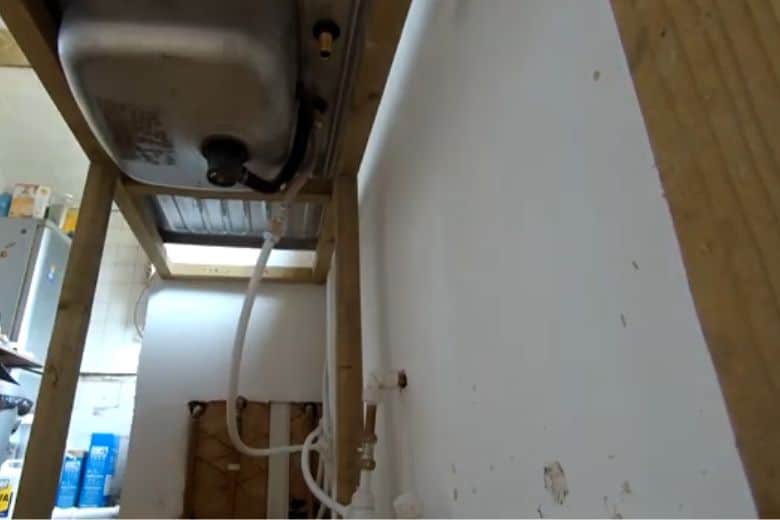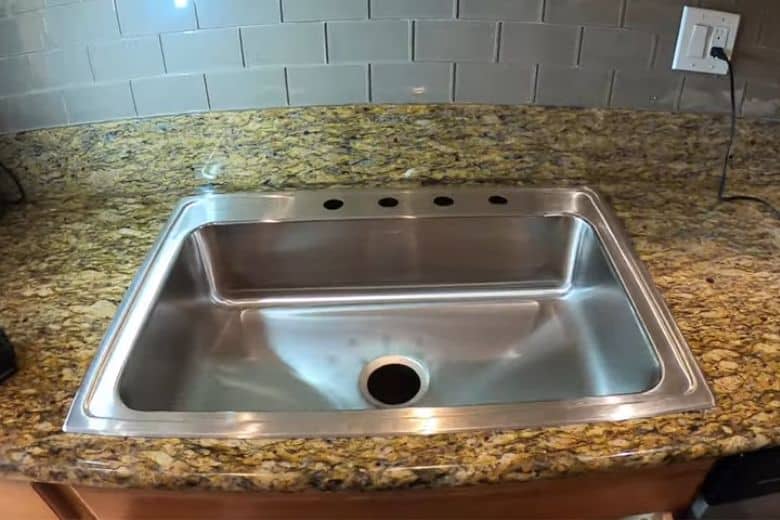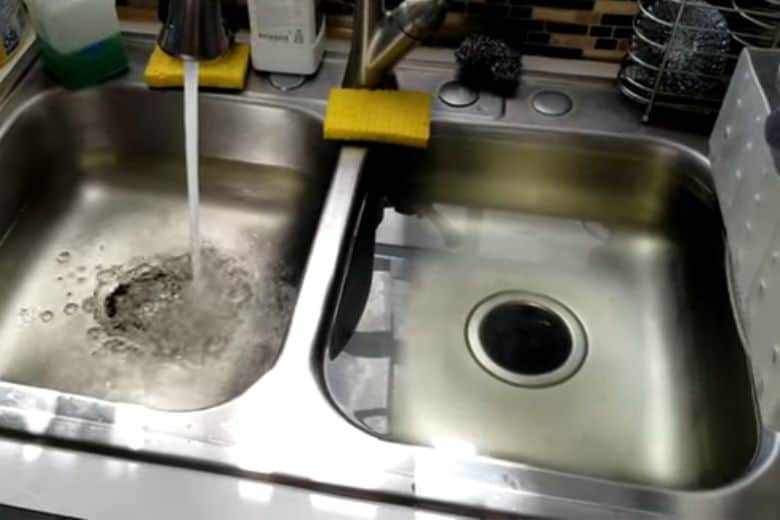A sink in both your kitchen and bathroom is crucial to the overall functioning of the plumbing system. When installing a sink, you must position it in a location where the plumbing system is already set up. It ensures proper installation, as moving the sink too far from its corresponding plumbing system can lead to suboptimal results. Nevertheless, suppose you encounter a situation where the plumbing system is slightly lower than the sink. In that case, it may be necessary to increase the height of the plumbing system for flawless performance.
In such a situation, you would want to know how to move sink plumbing over a few inches. Therefore, you might need clarification on whether it is really possible to move the plumbing system of the sink.
However, you can adjust the sink’s plumbing system either upward or downward to achieve a more suitable fit. Similarly, you can adjust the sink by moving it up or down as another possible solution.
In today’s session, we will be sharing techniques on how to adjust your sink’s plumbing by a few inches. Our discussion will cover moving the sink upwards or from the side to the center to achieve a better fit and increased user convenience in your kitchen and bathroom.
Is It Possible to Move the Sink Plumbing A Few Inches Over?
Before making any adjustments to your plumbing system, you must clearly understand the plumbing requirements. So, what do the experts recommend?
After consulting with several plumbers on this matter, they confirm that moving the sink plumbing up by a few inches is feasible.
Moreover, they advise that it’s preferable to adjust the sink’s positioning based on the height and distance of the plumbing system.
Another option is to extend the length of the water supply line and drain pipe to relocate the sink to a more suitable location, enhancing the convenience of use.
Now that we know it is possible to move the sink plumbing let’s explore the process of accomplishing this task.
How to Move Sink Plumbing over A Few Inches (Steps You Need to Follow)
While uncommon, there may be instances where homeowners wish to elevate their sink plumbing and even the sink itself by a few inches. Here you should note that moving the sink too far from its original location can cause issues within your home’s plumbing system. Generally, adjusting the sink plumbing by up to 10 inches is feasible without encountering any difficulties.
We discourage moving it beyond this distance. With this in mind, let’s dive into the steps involved in moving the sink plumbing a few inches higher on the wall.
List of Tools You Will Need
- Adjustable wrench
- Drill with a 3/4-inch drill bit
- Hacksaw
- Marker pen
- Measuring tape
- Plumbing putty or Teflon tape
- Rag for cleaning
- Two 90-degree elbow fittings
- Two valve fittings for hot and cold-water lines
- Two pieces of pipes for hot and cold-water lines.
Step 1: Shut off the Water Supply
First, you have to shut off the waterline to work on the plumbing system and sink. Begin by turning off the main water supply line in your home. Then, run the kitchen sink faucet to drain any remaining water from the pipe. Finally, turn off the faucet and kitchen sink to ensure no water is left inside the sink’s water line.
Step 2: Separate the Plumbing System from the Sink
To disconnect the plumbing system, including the sink’s hot and cold water lines, you must also take out the P-trap and tailpiece and reposition them afterwards. In that case, you must reach beneath the sink to separate the hot and cold-water lines.
If you have items stored in the cabinet, you will need to remove them before proceeding. Next, locate the hot and cold-water lines and use an adjustable wrench to connect to them. To disassemble the waterline, turn the wrench counterclockwise.
It would help if you also took apart the P-trap to make moving easier.
Step 3: Measure How Much You Need to Move up the Plumbing System
You need to determine the distance you need to move the plumbing system. However, remember that the main plumbing system is typically located within the wall and may not be movable. Extending the water supply line may be a viable solution in such cases.
To accurately measure the distance of the sink movement, you should take readings from the center of the sink rather than its sides. Once you have determined where to relocate the plumbing system, mark the spot with a marker pen.
Step 4: Drill a Hole in the Location Where You Want to Move the Plumbing
In order to relocate the plumbing system, including the hot and cold-water lines, you will need to use a drill to bore through the wall. To bore through the sink’s wall or cabinet, you will need a 3/4-inch drill bit.
Step 5: Cut the Hot and Cold-Water Lines
Cut the hot and cold-water lines from their original location using a hacksaw. When cutting the plumbing system’s water lines, make sure to leave a gap of 1″ to 2″ between the sink and the new position of the plumbing system.
Step 6: Connect the 90-Degree Elbow Pipe
Connect the 90-degree elbow pipe to where you have cut the water lines, ensuring it is properly connected to the water supply line. Use plumbing putty or Teflon tape to secure the connection point.
Step 7: Connect Pipes Using Elbow Fittings
After connecting one end of the elbow fitting to the water supply line, the other end will be empty. This end should be used to connect the two pipes that will function as the hot and cold-water lines. Before doing so, measure the distance between the elbow fitting and the point where you have moved up the plumbing system.
Once you have measured the distance, cut the two pipes to the appropriate length and connect them to the elbow fittings. Then, feed the two pipes through the sink cabinet and connect them to the sink faucet.
Step 8: Securely Tighten the Supply Lines
Locate the old valve fittings from the previously hot and cold-water lines and place them onto the new water supply lines. Secure them and use an adjustable wrench to tighten the valves to prevent water leakage.
Step 9: Complete the Project
After moving up the plumbing system of the sink, there may be clutter and dirt in the surrounding area. Clean the spot with a clean rag to remove any dust and debris. Finally, turn on the water supply lines and faucet to ensure everything functions properly.
Now time to verify that the kitchen sink faucet is working properly, and that water is flowing through it. Once you have confirmed this, return all items previously moved back into the cabinet.
Precaution for Moving Sink Plumbing over A Few Inches
- Before starting, turn off the water supply and disconnect any electrical connections to avoid accidents.
- Wear protective gloves and goggles to prevent any injury.
- Measure accurately and mark the new position before drilling or cutting any pipes.
- Use proper tools and techniques to cut and bore the pipes to avoid damaging the plumbing system or the sink.
- Double-check the fittings and connections before turning the water supply back on to avoid leaks or damage.
- If you need more confidence in your DIY skills, consider hiring a professional plumber to do the job.
Frequently Asked Questions
Can the sink drain pipe go up?
Answer: While moving up the sink drain pipe is feasible, it is essential to avoid positioning it too high above the ground. Doing so can decrease the draining speed and increase the likelihood of water getting stuck inside the drain pipe.
Is it expensive to move sink plumbing?
Answer: The cost of moving sink plumbing can vary depending on several factors, such as the extent of the work required, the location of the sink, and the materials used. In general, it can be a relatively expensive process due to the need for professional plumbing services and the cost of materials.
How hard is it to move sink plumbing?
Answer: Moving sink plumbing can be a moderately difficult task, especially if you have yet to gain prior plumbing experience. However, with the right tools, precautions, and step-by-step instructions, it is possible to move sink plumbing a few inches without professional help.
Conclusion
We hope this guide on moving sink plumbing over a few inches will help you decide to move up your sink’s plumbing. The process is simple and requires only basic plumbing knowledge to complete.
Paul Newman is a blogger who writes about plumbing and home improvement. Over the past 20 years, I have worked as a plumber. My passion is to share my knowledge and experience with others to improve their homes.




